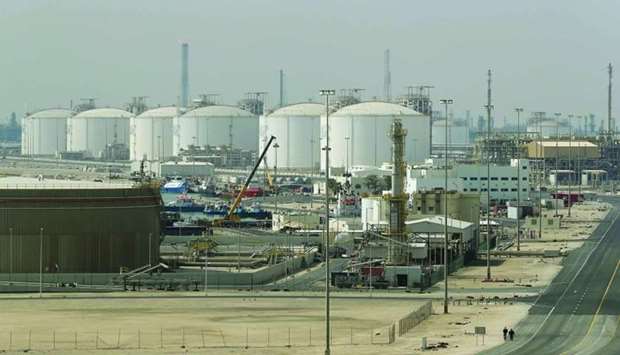Qatar Petroleum’s (QP) returns will be subdued until 2023 as it deploys some of its cash flow to finance the expansion of North Field production, which could again deliver government surpluses and allow fresh external investments of more than $5bn per year starting in 2024, according to Fitch, a global credit rating agency.
This was highlighted at a new report on Gulf sovereign wealth funds (SWFs) where it also estimates Qatar's SWF assets to remain large even under an adverse scenario involving a combination of significant further declines in oil prices, continued pressure on hydrocarbon production volumes, and weak financial returns.
These SWFs are among the largest in the world both in absolute terms and relative to the size of their economies, ranging from around 120% of GDP (gross domestic product) in Qatar to more than 400% in Kuwait.
QP on Monday disclosed the plans to increase liquefied natural gas production to 126mn tonnes per year by 2027, representing a huge increase of 64% on the current capacity of 77mn tonnes a year.
Although favourable asset market returns could allow SWF assets to be maintained even if there were persistent fiscal deficits; Fitch said Qatar has chosen to issue debt despite their large SWFs.
In its baseline approach, the rating agency said Qatar refinances maturing debt in 2019-22 and meets the rest of its funding needs by reducing the very high level of public sector deposits at banks without drawing down on external assets.
"In the stress scenario, drawdowns begin in 2020 at a rate of about $7bn a year, moderating to $5bn starting 2024," it said, adding Qatar has combined SWF drawdowns with debt issuance, and "we expect this to continue, partly reflecting higher expected returns on sovereign assets compared to yields on sovereign debt".
With the share of hydrocarbons extraction in GDP ranging from over 30% in Qatar to over 50% in Kuwait, Fitch said the assets-GDP ratio is "volatile" due to oil price movements, ballooning since the price crash in 2014-15.
The ratios to non-oil GDP and spending are more stable and also take into account the political economy of Gulf countries, which demand the redistribution of a significant share of oil revenue in the form of public employment, direct transfers to citizens and government spending that drives non-oil economic activity, it said, estimating that Qatar could cover 12 years of non-oil primary deficits out of their foreign assets.
These SWFs are among the largest in the world both in absolute terms and relative to the size of their economies, ranging from around 120% of GDP (gross domestic product) in Qatar to more than 400% in Kuwait.
QP on Monday disclosed the plans to increase liquefied natural gas production to 126mn tonnes per year by 2027, representing a huge increase of 64% on the current capacity of 77mn tonnes a year.
Although favourable asset market returns could allow SWF assets to be maintained even if there were persistent fiscal deficits; Fitch said Qatar has chosen to issue debt despite their large SWFs.
In its baseline approach, the rating agency said Qatar refinances maturing debt in 2019-22 and meets the rest of its funding needs by reducing the very high level of public sector deposits at banks without drawing down on external assets.
"In the stress scenario, drawdowns begin in 2020 at a rate of about $7bn a year, moderating to $5bn starting 2024," it said, adding Qatar has combined SWF drawdowns with debt issuance, and "we expect this to continue, partly reflecting higher expected returns on sovereign assets compared to yields on sovereign debt".
With the share of hydrocarbons extraction in GDP ranging from over 30% in Qatar to over 50% in Kuwait, Fitch said the assets-GDP ratio is "volatile" due to oil price movements, ballooning since the price crash in 2014-15.
The ratios to non-oil GDP and spending are more stable and also take into account the political economy of Gulf countries, which demand the redistribution of a significant share of oil revenue in the form of public employment, direct transfers to citizens and government spending that drives non-oil economic activity, it said, estimating that Qatar could cover 12 years of non-oil primary deficits out of their foreign assets.


